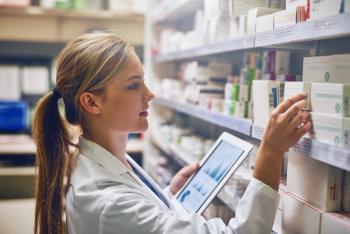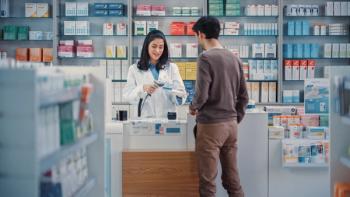
- Drug Topics December 2021
- Volume 165
- Issue 12
In the Era of Virtual Care, Tech Tools Facilitate Patient Provider Engagement
Mobile apps and fitness trackers predate the COVID-19 pandemic but are being utilized more ever before.
From home health monitoring devices to fitness tracking wearables, technology use in healthcare settings has significantly increased since the onset of the COVID-19 pandemic.1 Because the pandemic necessitated a switch to virtual care, patients and providers alike embraced digital tools—like those that facilitate at-home self-monitoring, improve medication adherence, or help manage lifestyle habits like diet and exercise.
“Pharmacists can guide patients on the most appropriate tech tools to use based on patient-specific factors to ensure optimal management of their medical conditions,” said Briann Fischetti, PharmD, MBA, BCACP, AAHIVP, an assistant professor of pharmacy practice at The Arnold & Marie Schwartz College of Pharmacy and Health Sciences (LIU Pharmacy) at Long Island University in Brooklyn, New York.
Electronic Health Record Platforms
Electronic Health Record Platforms Patients can use portals like Epic’s MyChart on their phone or computer, putting a tremendous amount of health information at their fingertips.
They can schedule appointments, receive test results, manage prescriptions, and review medical records. “I encourage every patient, even if they’re not comfortable with technology, to try out their health care providers’ patient portal. It’s a great way to engage with their care team and be an active part of their health care,” said Elizabeth Hall, PharmD, informatics pharmacist in outpatient pharmacy, The Ohio State University Wexner Medical Center, Columbus, Ohio. Brooke Fidler, PharmD, associate professor of pharmacy practice at Long Island University’s LIU Pharmacy, is also a proponent of MyChart.
“Many health systems use Epic as their electronic medical record system. It’s one of the more user-friendly portals,” she said. “[It] allows patients to message their provider for medication-related questions or refills.”
Mobile Apps
Hundreds of phone applications are geared toward monitoring medication adherence and managing chronic diseases like diabetes. “I recommend discussing a patient’s wants and needs for an application while also considering how technologically savvy they are,” said Maria Sorbera, PharmD, AAHIVP, BCACP, assistant professor of pharmacy practice at Long Island University’s LIU Pharmacy. Many applications are free or have tiered access. These applications are also great tools to assist motivated patients with improving their medication adherence and disease control, Sorbera added.
In many cases, an app can also serve as a medication list for patients to bring to new providers or to refer to if they’re hospitalized.
Users can enter all their medications, including the drug name, dosage, frequency, and indication, and set up reminders to take medication at certain times each day.
The Medifriend feature allows users to sync their app with that of a family member, letting others stay informed in case a dose is missed, according to Amanda Phoenix, PharmD, BCACP, CDE, an assistant professor of pharmacy practice at Touro College of Pharmacy and ambulatory care clinical pharmacist at BronxCare Health System in New York, New York.
This app uses the smartphone accelerometer to track steps and provides helpful workout and meal prep tips.
“This app is ideal for patients who count carbs for diabetes management or for people who count calories to help lose weight,” Phoenix said.
For patients with type 2 diabetes,
“This is a great tool for patients who require touch points between visits and appreciate a collaborative approach to their care,” Fischetti said.
Notifications and Reminders
Notifications and Reminders The simplest way to track medication reminders is by setting an alarm or calendar notification using the apps on a mobile phone.
“This can be a good option for patients with poor health literacy or for [older] patients who aren’t technologically savvy,” Fidler said. A daily alarm can also be set on most glucometers to remind patients to check their glucose. For those more comfortable with technology, some free phone apps give reminders for medication refills and medication dosing at a prescheduled time. Pill Reminder and MyTherapy can also be used to remind patients to take medications.
Messaging-based Platforms
Messaging-based Platforms Messaging-based platforms provide ways for pharmacies and other health care providers to communicate with their patients.
“We encourage patients to take advantage of these messaging systems because sometimes it can be difficult to contact a health care provider by phone,” Sorbera said. Most of these platforms require a pharmacy or clinic to pay for the service but are usually free to patients.
MyChart also includes a messaging component for patients to contact providers, make appointments, and request medication refills.
Health Tracking Monitors
For motivated patients, wearable monitors can be a great adjunct to medication therapy and can assist with lifestyle modifications, Fischetti said. Basic health tracking tools include fitness-specific wearables like Fitbit and more general devices like the Apple Watch. These wearable fitness trackers can help patients set realistic goals. “You can ask patients to track their activity for 1 or 2 weeks [and] then review their baseline activity,” Fischetti said.
“From there, goals for the number of steps, calories burnt, and so forth can be set and monitored. Monitors also assist with accountability because patients know that we’ll review trackers when we meet.”
Social Media
In general, Fiddler doesn’t recommend social media sites to patients.
“Due to the abundance of medical and medication misinformation on social media platforms, I have found that it’s best to avoid steering patients to social media for medication management,” she said. “Patients may want to independently use social media for support groups and social support; however, I may caution them to ask their health care provider before implementing [the] recommendations discovered on social media.”
Pharmacists can direct patients who are looking for updates—or notifications on specific medical-related issues in the news—to reputable social media sources, Sorbera said. For example, pharmacists can direct patients who want current information on COVID-19 to the CDC’s social media pages.
Advising Patients
Patients should ask their health care providers for suggestions before committing to any paid application subscriptions, Fischetti noted.
“It may be tempting to have advanced features, but many patients may not need these features and it’s best to learn how to navigate an application prior to buying a subscription,” she said. The most important factors to consider before recommending one of these tools is the patient’s level of health literacy, how tech savvy they are, their insurance situation, and their financial means.
“Unfortunately, insurers can hinder the use of many advanced tools for home monitoring,” Fidler said. “However...a number of free applications and simple tools [are available] to aid in medication adherence and disease state management.”
Reference
1. Bestsennyy O, Gilbert G, Harris A, Rost J. Telehealth: aquarter-trillion-dollar post-COVID-19 reality? McKinsey& Company. July 9, 2021. Accessed November 10, 2021.
Articles in this issue
almost 4 years ago
New Drug Review: Atogepant FDA-Approved for Migraine Treatmentalmost 4 years ago
Slow Going: Progress to Resolve Drug Supply Chain Issues Is Minimalalmost 4 years ago
Technology Solutions Aid Community Pharmacists in Expanding Rolesabout 4 years ago
Top Pharmacy Innovations of 2021about 4 years ago
Cannabis Consulting: Are You Ready?about 4 years ago
Pharmacist Intervention Helps Combat Chronic Opioid Use, Misuseabout 4 years ago
Vaccine and Pain Management Updates from ACR Convergence 2021about 4 years ago
Medical Misinformation Consequences in Health CareNewsletter
Pharmacy practice is always changing. Stay ahead of the curve with the Drug Topics newsletter and get the latest drug information, industry trends, and patient care tips.































































































































